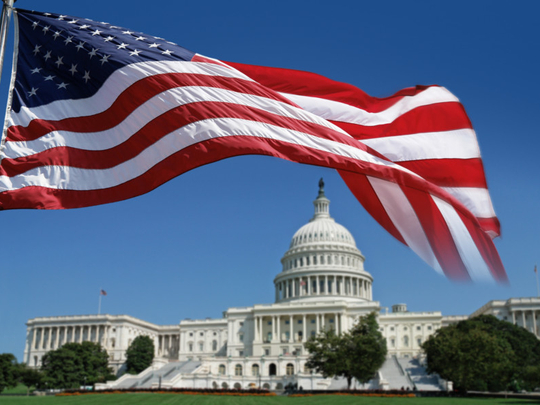
Not so long ago, Republicans figured that they’d pick up a half-dozen seats in the Senate. A slew of Democrats in states that President Donald Trump won (handily, in some cases) — North Dakota, Indiana, Montana, Ohio, Pennsylvania, Missouri and West Virginia — would be on the ballot. Now, 18 months into the Trump administration, Republicans are fighting to keep their majority. Last Tuesday’s results and recent polling confirm how competitive will be the contest for the Senate’s majority.
Jennifer Duffy of the Cook Political Report writes about the Senate race in Arizona between Representatives Kyrsten Sinema (Democrat, from Arizona) and Martha McSally (Republican, from Arizona): “Of the most competitive Senate races this cycle, McSally and Sinema seem the most evenly matched. Both nominees serve in the House, both represent competitive districts, and both are strong fundraisers. Sinema was first elected in 2012 to represent the 9th congressional district, which encompasses the central and eastern suburbs of Phoenix, Tempe and western Mesa. It has a Partisan Voting Index of D+4, which means that it votes four points more Democratic than the country as a whole. This should be one of the closest races of the cycle. It is in the Toss Up column.”
Florida should be equally close, as Duffy predicts incumbent Senator Bill Nelson (Democrat, from Florida), will face the biggest threat of his political life: “In November, Nelson will face Republican Governor Rick Scott, who is termed out of office at the end of this year. Scott is already well-known to voters after seven years at the helm of the state. While he is a strong fundraiser, he has also demonstrated a willingness [to spend] his personal wealth; Scott spent in excess of $100 million [Dh367.8 million] between his two gubernatorial races. Democrats will work to tie Scott to Trump, who is not especially popular in the state. They will also attempt to tag him with responsibility for every problem that ails the state. Every indicator points to a race that will go down to the wire. The contest is in the Toss Up column.”
Moreover, Nelson’s subdued personality and lacklustre fundraising worry Democratic insiders. In many ways, Nelson is a throwback to an earlier time of policy-oriented, behind-the-scenes legislators. In the era of Trump, where big personalities and free-media dominance dominate, Nelson may be the most vulnerable Senate Democrat on the ballot.
If Democrats lose in Florida, they will have to run the table in Arizona, Nevada and one other state (former Democratic Tennessee governor Phil Bredesen may be their best challenger; in Texas, Democrats have fond hopes for a stunning upset by Beto O’Rourke) to win the Senate majority without losing another incumbent’s seat. In a big “blue wave” election — with dynamic Democratic gubernatorial candidates at the top of the ticket in some key states — there is a narrow path to a Democratic majority. It’s easy to forget, however, that this was supposed to be a huge opportunity for Republicans to build up their Senate majority.
It’s indicative of the fortunes of the Republican Party under Trump. His base is deep but narrow, a problem in Senate races where gerrymandering won’t save far-right candidates. Trump has been able to tip the scales towards his acolytes in primaries, as he did in Florida. However, that may prove to be a burden rather than a benefit in the general election. If Republicans end up losing a slew of what had been winnable contests, it should send a tremor through the GOP. The Trump Republican Party may have a short shelf life, thanks to its determination to play to the lowest common denominator and a sliver of the electorate.
— Washington Post
Jennifer Rubin is a columnist offering opinion from a conservative perspective. She writes for the Washington Post, Politico and National Review among other publications.










